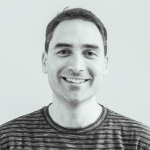Cut-through traffic Leuven-East
22076
From 2023 to 2027
TML is investigating the problem of creeping traffic in the eastern outskirts around Leuven and evaluating whether a new (tunnel) connection between Tiense- and Diestsesteenweg could provide a solution, with alternative options without large-scale infrastructure. TML uses the traffic model Traffic Scout and Telraam data to map local traffic flows and carries out a social cost-benefit analysis to assess the impact of the route variants.
Several residential streets in the eastern outskirts around Leuven suffer from cut-through traffic. This creates unsafety and causes air and noise pollution. It broadly concerns the area demarcated by the E40, R23, E314, and the N223. The main objective of the study is to identify the concrete problems with cut-through traffic and to investigate whether a new (tunnel) connection between Tiensesteenweg and Diestsesteenweg (N3 and N2), and possibly further to the E314, could provide a solution. We are also investigating alternative solutions without large-scale new infrastructure.
For this, TML uses its own Traffic Scout model, integrating Telraam data with other data sources such as Open Street Map and highway data from the Flemish government. This traffic model is perfectly geared to identify the local problem of queuing traffic. It models car, freight, and bicycle traffic on all local roads and distinguishes transit and local traffic through selected link analyses. We use this traffic model to find suitable routes for the new connection. For the promising route variants, a feasibility study will have to show their viability. In the traffic analyses and calculations for each variant, we also check which road users the route is suitable for and what the impact is on waiting times at bottlenecks, the reduction of cut-through traffic per street, etc. We also examine other solution options, such as a change in circulation, junctions, intersection solutions, interventions for bicycle and public transport, etc. Finally, we compare the preferred route(s) and other alternatives with a null alternative by means of a social cost-benefit analysis (SCBA).
This study is extensive and requires the necessary time to investigate all possibilities, as the Flemish government wants to carry out the task thoroughly. The study will clarify how current traffic flows and will include the experiences of local residents in the wider region. It is not yet clear when the first results will be available.
Several residential streets in the eastern outskirts around Leuven suffer from cut-through traffic. This creates unsafety and causes air and noise pollution. It broadly concerns the area demarcated by the E40, R23, E314, and the N223. The main objective of the study is to identify the concrete problems with cut-through traffic and to investigate whether a new (tunnel) connection between Tiensesteenweg and Diestsesteenweg (N3 and N2), and possibly further to the E314, could provide a solution. We are also investigating alternative solutions without large-scale new infrastructure.
For this, TML uses its own Traffic Scout model, integrating Telraam data with other data sources such as Open Street Map and highway data from the Flemish government. This traffic model is perfectly geared to identify the local problem of queuing traffic. It models car, freight, and bicycle traffic on all local roads and distinguishes transit and local traffic through selected link analyses. We use this traffic model to find suitable routes for the new connection. For the promising route variants, a feasibility study will have to show their viability. In the traffic analyses and calculations for each variant, we also check which road users the route is suitable for and what the impact is on waiting times at bottlenecks, the reduction of cut-through traffic per street, etc. We also examine other solution options, such as a change in circulation, junctions, intersection solutions, interventions for bicycle and public transport, etc. Finally, we compare the preferred route(s) and other alternatives with a null alternative by means of a social cost-benefit analysis (SCBA).
This study is extensive and requires the necessary time to investigate all possibilities, as the Flemish government wants to carry out the task thoroughly. The study will clarify how current traffic flows and will include the experiences of local residents in the wider region. It is not yet clear when the first results will be available.


